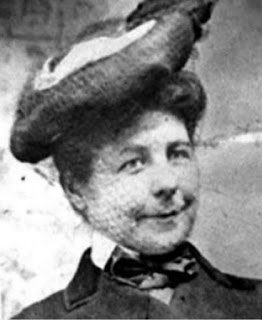Good Morning! Please welcome guest author, Nina Romano!
The Girl Who Loved Cayo Bradley by Nina Romano
When
Darby McPhee falls in love with Cayo Bradley, a wild cowboy from a nearby
ranch, her world is ripped apart. Caught in a lifeless existence of caring for
her father and brothers since her mother’s death, Darby does little else but
work. But a death-bed promise to her mother to get her education now stands in
the way of her heart’s desire to belong to the rough-and-tumble Cayo Bradley.
Darby
is Cayo’s redemption from a horrific act in his past that torments him. After
being captured as a young boy by the Jicarilla Apache, he now tries to settle
back into white society—but how can he? If he loses Darby, he loses everything.
Darby
is determined to keep her promise to her mother, but will Cayo wait for her? In
this stunning tale of love and loss, Darby comes to understand that no matter
what happens, she will always be THE GIRL WHO LOVED CAYO BRADLEY…
Here's a little excerpt:
He knew people saw him as part Apache. Others
claimed he was left for dead by bandoleros, and because of his aloof and
stealth disposition, and the fact that he was shy and nonconfrontational like
the animal, people believed that’s how he came to be named Coyote. Somewhere
along the way, Coyote’s nickname became Cayo. He didn’t care what people called
him as long as they did, and for sure he knew his name didn’t matter because he’d
never fit in anywhere. Once you’ve lived wild and free, it’s near impossible to
return wholly capable of fitting into refined society. He knew others like
himself, children who had been taken and lived with Kiowa or other tribes, and
what he saw in them he knew was the same for him. They were the same outcast
breed he was, not a trace of Indian blood, but Indian in the way they thought.
He’d never completely forgotten his own language, English, so when he finally
decided to go back to living the white folks’ way, he listened to speech,
carefully repeated words, and held himself close, like a gambler in a poker
game, keeping his cards to his chest. He shouldered these thoughts about
himself and that other life he lived before as a yoke on an ox. It weighed on
him, but he could do nothing to shirk it.
Nobody in town knew him by any other name. Whatever his component parts were, it
was for certain he was known as a man quick with a Bowie knife,
swifter with a whip. That was because nobody had ever seen him shoot a deadly
arrow. He wore chaps every day but Saturday when he drove the buckboard. Cayo
carried two Colt pistols in his holsters and never rode his horse without a
Winchester 30/30 rifle strapped to his saddle. He was a man people
respected, a man who kept his mouth shut and eyes peeled, even the eyes they
said he had in the back of his head.
A bit about the author in bio form:
A bit about the author in bio form:
Nina Romano
earned a B.S. from Ithaca College, an M.A. from Adelphi University and a B.A.
and an M.F.A. in Creative Writing from FIU. She’s a world traveler and lover of
history. She lived in Rome, Italy, for twenty years, and is fluent in Italian
and Spanish. She has authored a short story collection, The Other Side of
the Gates, and has had five poetry collections and two poetry
chapbooks published traditionally by small independents.
Nina Romano’s
historical Wayfarer Trilogy has been published from Turner
Publishing. The Secret Language of Women, Book #1, was a
Foreword Reviews Book Award Finalist and Gold Medal winner of the Independent
Publisher’s 2016 IPPY Book Award. Lemon Blossoms, Book # 2, was a Foreword
Reviews Book Award Finalist, and
In America, Book #3, was a finalist in Chanticleer Media’s Chatelaine Book
Awards. Her latest novel, The Girl Who Loved Cayo
Bradley, a Western Historical Romance, has been recently released from
Prairie Rose Publications. You can find her on Goodreads, Twitter @ninsthewriter
and Facebook.
A note from Nina: I’m most blessed and
grateful to have had two wonderful authors that I admire blurb this book.
Blurbs:
Romano’s
story sizzles with the tension of lovers—one struggling to blend Apache ways
and white, the other torn between East and West—searching for a way to join two lives
going in opposite directions.
— Ruth Hull Chatlien, Blood Moon, Winner of a Reader's Favorite 2018 Gold
Medal for Western Fiction and Winner of the 2018 Laramie Award.
The
Girl Who Loved Cayo Bradley, a superbly crafted romantic page-turner, is
a deftly spun tale of ill-starred sweethearts in the American West. Darby, a
charming farm girl, and Cayo, Apache raised, a secretive man with a disturbing
past. Sparks ignite, burning intensely despite cruel circumstances to separate
them—an expertly woven story with witty dialogue, fast-paced plot, and
stunning, enchanting prose!
— Michelle Cox, award-winning author of the
Henrietta and Inspector Howard series.
Amazon Link: https://amzn.to/2J9NQ6L






















































